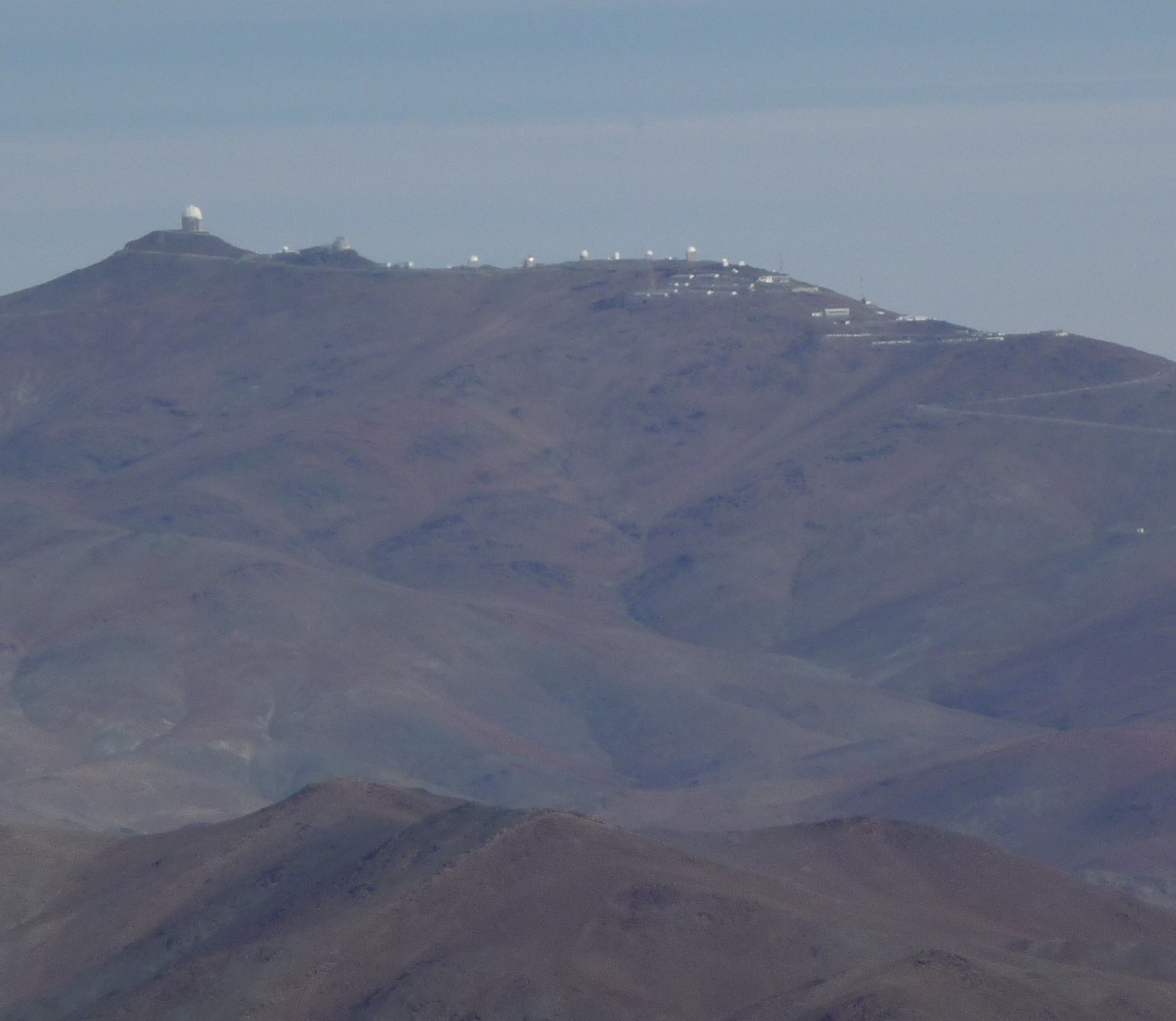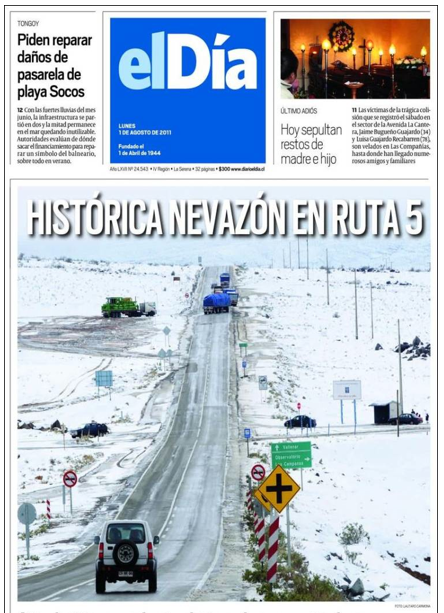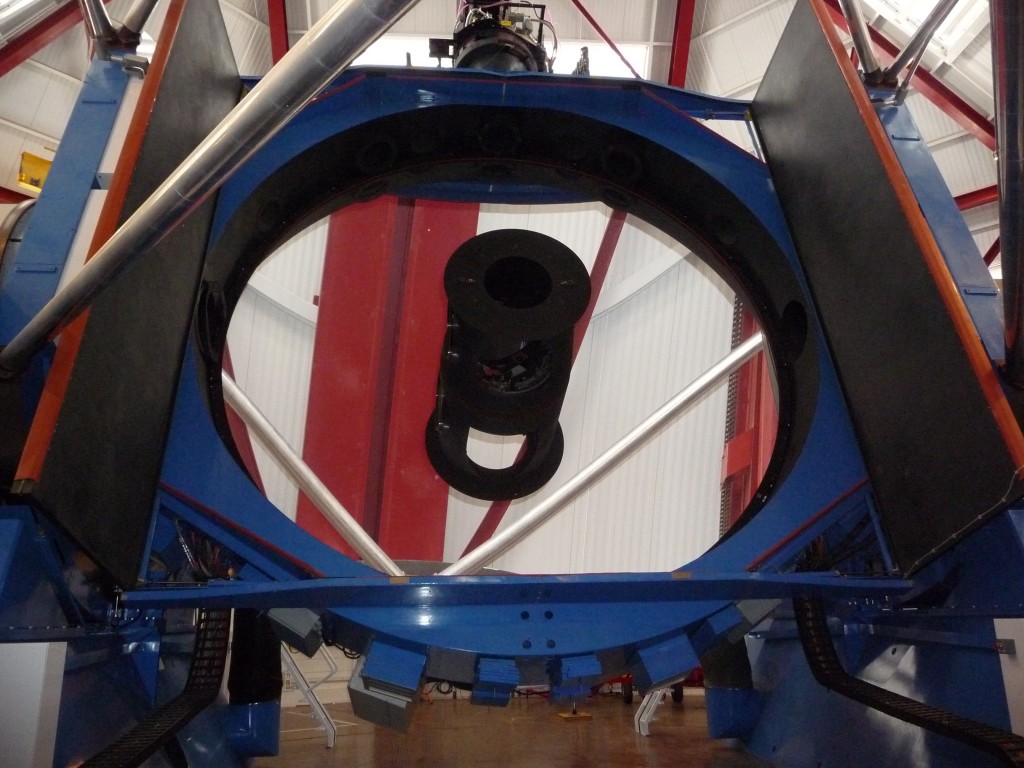This essay originally ran on September 23, 2011. It’s reappearing here as part of LWON’s “It’s ATACAMA WEEK! (Because we can.)“
Today is the autumnal equinox, the last partial day of summer and the first partial day of autumn—at least in the Northern Hemisphere. In the Southern, today is the vernal equinox, the last full day of winter and the first partial day of spring. (Yes, I know, a swath of the Pacific Ocean abutting the International Date Line, including the Aleutian Islands, Hawaii, the Cook Islands, and French Polynesia, experienced the equinox very late yesterday [local time], but they’re just being difficult. Besides, the equinox, when the Sun passes precisely over the equator, happens everywhere on Earth at the same moment: 9:05 a.m. Universal Time.) For the purposes of this post the distinction between autumnal and vernal equinox—Northern and Southern Hemisphere—is one worth making, because where I spent my summer vacation this year was Chile.
When I told a friend that I would be traveling to Chile because it’s home to some of the world’s greatest observatories, she naturally asked, “Why Chile?” Because, I explained, the calm and dry air of the Atacama Desert makes Chile just about ideal for astronomy. “But,” she said, after a little reflection, “doesn’t the sand get in the gears?”
I don’t know much about geology, but I do know that deserts are defined by their aridity, not by their Lawrence-of-Arabia duneness. The South Pole, for instance, sits in the middle of a desert, which is what makes it, too, an impeccable place for astronomy. But I learned to empathize with her cluelessness, because once I got to Chile, I realized I didn’t know what kind of landscape to expect, either.
I had been invited by the Millennium Center for Supernova Science and the Astronomy Department of the Universidad de Chile to give a series of talks on Chile’s contributions to cosmology. Much of the science that comes out of Chile’s many observatories goes home with visiting astronomers, as if it were one more product to export, like the copper the country prodigiously mines. But some of it is locally grown, including the early 1990s Calán/Tololo supernova survey that served as a foundation for the discovery of evidence for dark energy (as I explained in The 4% Universe, my book on dark matter and dark energy—hence the invitation). When I’d finished the lecture part of my trip, in Santiago, two of the founders of the Calán/Tololo survey, José Maza and Mario Hamuy (as well as press attaché David Azócar), led me on a tour of two observatories in the north of the country, in the Atacama Desert.
I saw what guests see at observatories, and then some. At Cerro Tololo Inter-American Observatory, about 45 miles east of the coastal town of La Serena, I toured the telescopes, including the 4-meter Blanco, but I also saw the former darkroom where astronomers once developed photographic plates. They had to learn how to perform the task completely in the dark, said Maza, and after some rummaging, he found a relic plate in a cupboard. You could tell which side had the emulsion by licking the edge, he said, and then he demonstrated.
The next day we drove back into La Serena and then back out again, 60 miles northeast, to Las Campanas Observatory, home of the twin 6.5-meter Magellan Telescopes. Perhaps because the directors of the observatory, Mark Phillips and Miguel Roth, had joined our entourage for the evening, the telescope operator had one of the Magellan telescopes curtsy, the better for us to inspect the primary mirror.
Yet when I think about that trip, what first comes to mind isn’t the science but the scenery. While I knew I wouldn’t be traversing sand dunes, and while I knew I’d be heading into the Andes, I didn’t know if the observatories were on a plateau (which they were, in my imagination) or among the peaks (which they were, in fact). But even being among the peaks wasn’t what I might have imagined.
The winding road to Cerro Tololo was rocky, the landscape brown and barren, except for cacti. At one point I noticed unusually large scat along the road.
“What animal is that from?” I said. Wild donkeys, I was told, and sure enough, around the next bend, a pack of a dozen or more wild donkeys was blocking the road. They thought about it for a while, then deigned to move out of the way. (Because headlights at night are antithetical to astronomy on a mountaintop, and parking lights instead are de rigueur, an astronomer once suggested that the local donkeys all be outfitted with reflectors. He wasn’t allowed to live it down.)
The landscape the next day, on the road to Las Campanas, was even more brown, more barren. “It looks like somebody crumpled a piece of paper and tossed it aside,” someone in our car said—a reminder that many scientists harbor the soul of a poet.
Yet perhaps the most vivid mental postcard I’ve carried home doesn’t show one of these images that I didn’t expect to see, yet did. It shows something that I did expect to see, yet didn’t: the Large and Small Magellanic Clouds, satellite galaxies to our own Milky Way. In the weeks leading up to the trip, I often thought of the moment I would look at the night sky without benefit of a telescope yet still see galaxies. I didn’t have any particular thoughts attached to the anticipation; nothing profound presented itself to me. I figured that profundity, should it come, would come in the moment. But if it did come, it would have something to do with seeing beyond our own “island universe,” as astronomers used to call the Milky Way, before they discovered that our island universe wasn’t unique, and that the evidence for the existence of other galaxies had been right in front of our eyes all along, at least in the Southern Hemisphere.
Both nights, however, clouds obscured all but a ho-hum number of stars, leaving the other Clouds, the Magellanic ones, to continue to reside in my imagination, burning brighter than ever—brighter even than a reflector on a wild donkey.
* * *
Photos, top and bottom: José Maza. A front page of El Día shows what I missed by two days; note the turnoff to Observatorio Las Campanas.



I’d have to say, reading your article has gotten me in such a dreamy state that I actually feel a little bit of disdain towards my job which is very mundane compared to yours. I’ve always been fascinated with astronomy and cosmology for that matter. Thank you for sharing your experience very articulately. Simply reading it has given me a sense of profundity which perhaps only I can understand. I love your work by the way. Stay brilliant Mr. Panek 🙂